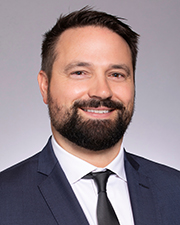News: Financial Digest
Posted: May 12, 2010
CMBS loan restructuring results 2009 - 2010
As of April 2010, approximately 70 billion of loans were in the hands of Special Servicers either due to default or imminent default. Real estate owners have lost tenants, lost the ability to service their mortgages and have seen their property's value fall significantly. According to Fitch Ratings, the current default rate of 7% is expected to climb to 11% by year-end. The bottom-line is that there is an excessive volume of loans in need of restructuring by Special Servicers.
Special Servicers have restructured an estimated $13.7 billion of CMBS loans to date according to Deutsche Bank analysts. Several types of successful restructures have been executed.
Loan Extension:
Servicer extends the loan one to two years and may require a cashflow mortgage. Other economic term changes may accompany the extension, e.g. interest rate reductions, reserve adjustments and re-casting of amortizations. Generally, the borrower has a DSCR around 1 and the loan is in relative value balance. The servicer is convinced that the borrower is a good operator but cannot re-finance in today's market.
Debt Financed
Discounted Payoff (DPO)
Servicer and borrower agree to a discounted settlement that gets financed via a new lender. Typically, trusts that own these mortgages do not want to own and operate properties that are highly specialized in nature, house difficult to manage operating businesses (i.e. some hotels) and cannot be feasibly repositioned upon foreclosure. A DPO is a viable option for these asset-types.
Equity Infused
Discounted Payoff
Existing or new equity partners may finance a DPO. This form of DPO has led to asset sales. A DPO can take more than 12 months and requires the borrower's ongoing and full cooperation.
Note Sale:
Servicer may sell their position in a note if the borrower is uncooperative, unreasonable, or simply because the best NPV according to the PSA is a sale. Many note buyers in this marketplace are loan to own and will foreclose.
AB Structure:
The face amount of the mortgage is split into an A note and a B note. The current cashflow of the property covers the debt service on the A note. The B note becomes the "hope note" and typically doesn't receive interest payments during the term. The hope is that at loan maturity there will be sufficient proceeds available to payoff Note A and paydown Note B.
If you find yourself in Special Servicing don't despair. You have viable restructuring options.
David Goldfisher is a principal at The Henley Group, South Natick, Mass.
Tags:
Financial Digest
MORE FROM Financial Digest
Preservation of Affordable Housing secures $23.5 million in financing from Rockland Trust and Citizens Bank
Cambridge, MA The nonprofit Preservation of Affordable Housing (POAH) has secured $23.5 million in financing from Rockland Trust and Citizens Bank to transform a 150-year-old, underutilized church complex into housing. The project will ultimately create 46 affordable family-sized apartments.
Columns and Thought Leadership

Conn. hospitality market: A technical appraisal perspective on market dynamics and valuation challenges (2019-2025)
The Connecticut hospitality market has demonstrated uneven recovery patterns between 2019 and 2025, with boutique and historic properties achieving $125 RevPAR in 2025, up 8.7% from the 2019 level. Coastal resort properties achieved a $105 RevPAR in 2025, representing 10.5% growth since 2019. Casino corridor properties maintained modest growth with RevPAR improving 4.5% to $92 in 2025.

Examples of investors who used Kay Properties for legacy and estate planning purposes for rental property/portfolios - by Dwight Kay
Preserving wealth across multiple generations requires strategic planning, foresight, and the right investment vehicles. Delaware Statutory Trusts (DSTs) offer a powerful solution for families looking to build and protect their financial legacy and to efficiently plan for their estate.









